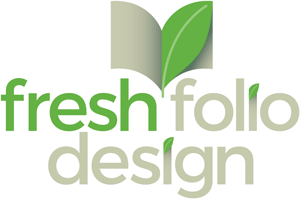 Imagine a world-renowned, first-class, professional chef preparing their iconic dish. How likely do you think it would be for the chef to allow people to add whatever ingredients and spices they wish to his dish?
Imagine a world-renowned, first-class, professional chef preparing their iconic dish. How likely do you think it would be for the chef to allow people to add whatever ingredients and spices they wish to his dish?
He has taken the time to find the exact mix of ingredients and seasonings, added them in precise measures and cooked/baked/simmered them for the perfect amount of time. Everything was done intentionally and with an eye to the final result. Changing a single thing without specific reason and without knowing the impact would be foolhardy.
This is similar to the concept of Design by Committee, or Cooking by Club, the outcome is a flat, ineffective, neutered result which doesn’t meet its objectives and goals.
What is Design by Committee?
Design by Committee is the idea that a project has many contributors giving direction for the design choices, but no unifying plan of vision. These can be either actual, trained designers, or participants who believe they have inherent design capabilities.
The idea behind this kind of organizing construct is this — the more people there are providing input and solutions, the better the final product will be. The corollary to that is that there are essentially no bad ideas or suggestions, which on its face is a ridiculous comment. For example, the inventors of the Dog Sack probably thought they were on to something, but I think we can all agree that there are a few inherent problems with this idea.
Another problem with the Design by Committee approach is an assumption that anybody can be a designer. However, while everyone has the capability to be creative, as we’ve covered in previous weeks, visually solving problems requires the understanding of, and the ability to use, many different elements: color, typography, hierarchy, contrast, repetition, etc.
While design does require strong problem solving skills, not all problem solvers are designers.
A designer uses their experience and problem solving skills to address the visual challenges that each project presents. However, in some companies this role is diminished that of a short-order cook who must serve up the requests of every person, rather than hold to the original goals and target audience.
Don’t Many Hands Make Light Work?
Don’t get me wrong, there is absolutely a place for the whole teamwork approach. That time is during the discovery/objectives/parameters process when all of the elements of the project are being defined and established. That’s the time when you need to make certain that all the stakeholders are heard, that all of the specific needs for the project are nailed down, and you confirm that everyone is on the same page.
However, once that’s done, then it’s the designer’s job to make sure that all of those elements are addressed in the best way possible.
A good designer should be able to explain the reasoning and rationale behind each decision, as well as explain where all of the project needs are addressed in the concept presentation.
This (and after the initial layout) is where the Design by Committee problem will usually rear its head.
- “Can’t the logo by bigger?”
- “Why are we using orange?”
- “Do we need all that white space?”
A good way to respond to specific design questions is to ask questions and/or drive it back toward the focus of the target audience.
- “What feels off with the logo?”
- “What information do we have that the target audience dislikes orange?”
- “What’s the benefit for the reader in decreasing white space?”
Your responses can use the proposed feedback as a dialogue starter that points back toward the initial requirements and the project data to establish the reasons for the design choices. As much as possible, back up the decisions with the facts that drove the design solutions.
One thing that you want to be careful of is that the project doesn’t become a mess of compromises. The more that you can keep the discussion on the topic of the problem vs. specific solutions being proposed, the better.
What’s the Correct Recipe?
While it’s important to make sure that all the voices that need to be heard all, make sure that those are all heard early on in the process before the actual design work begins to take place. One of the added benefits to making sure that happens is that allows you to address any design concerns using the needs that were specified at the beginning. As much as possible, keep the discussions objective and goal-based.
Remember, if there are too many cooks in the kitchen, all you get is a mess.



Leave a Reply